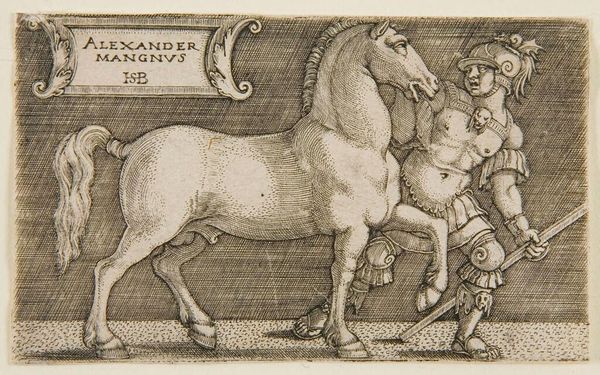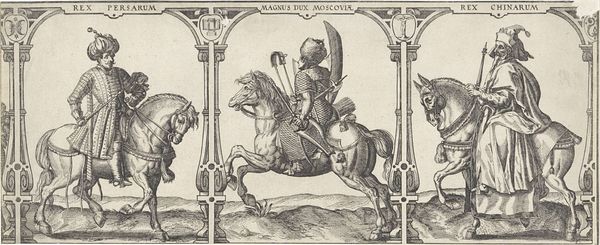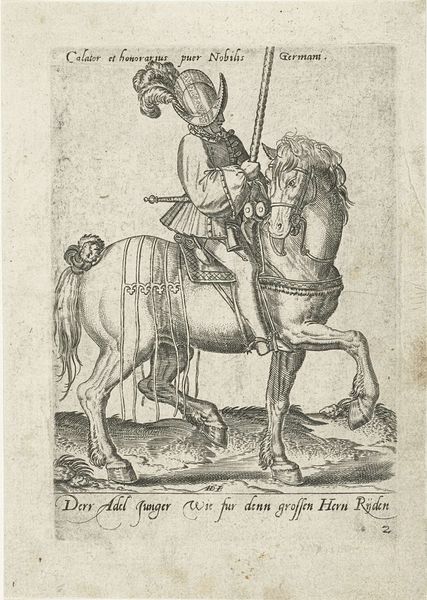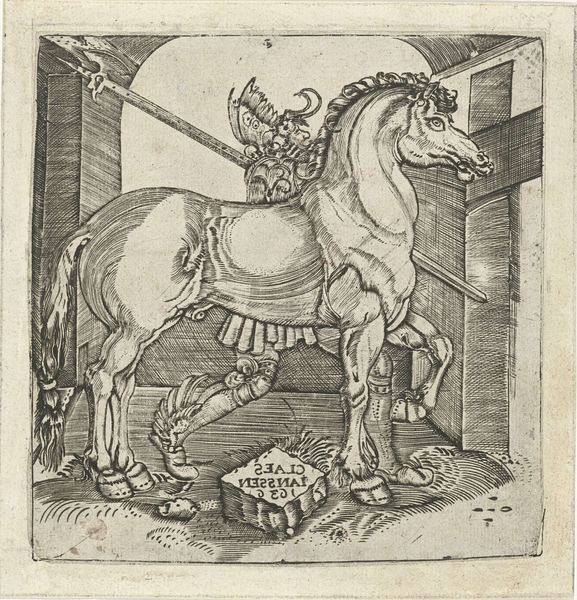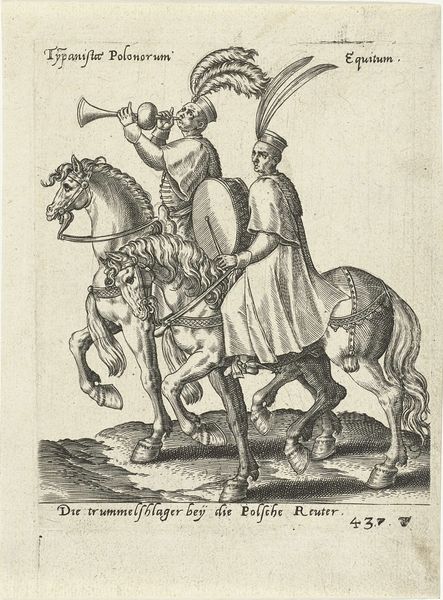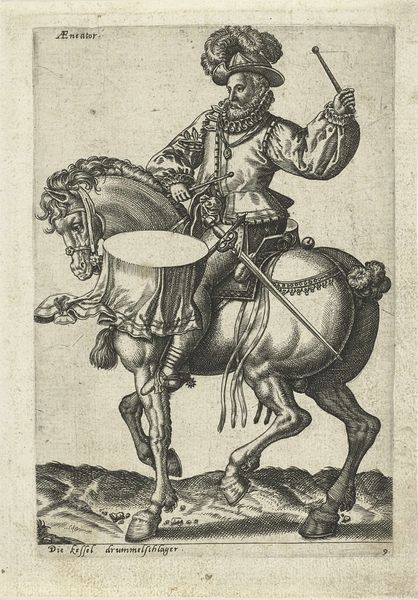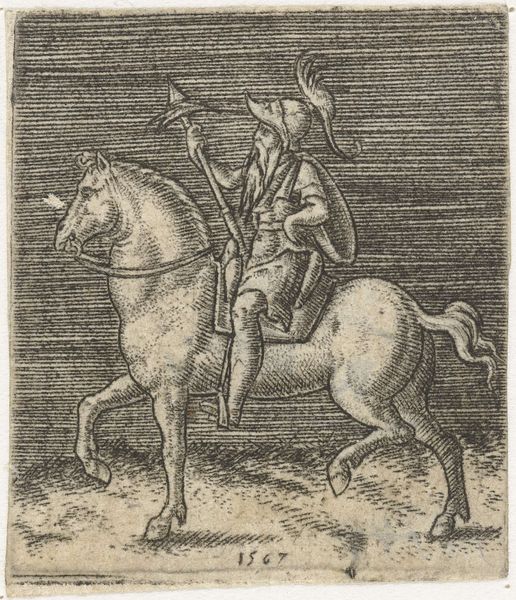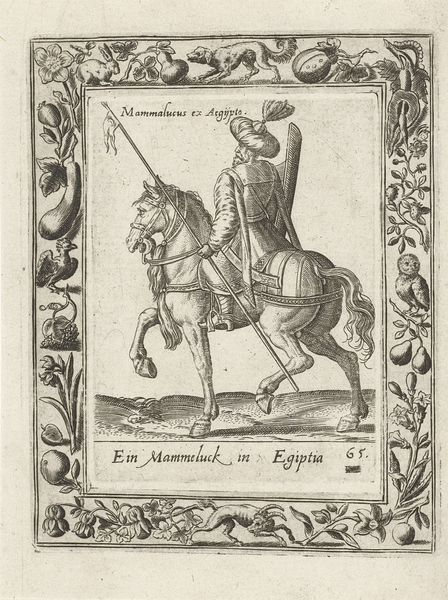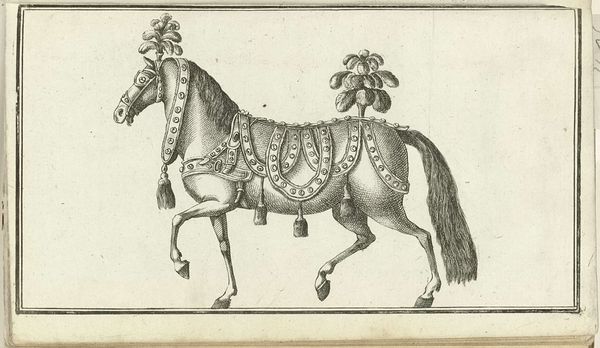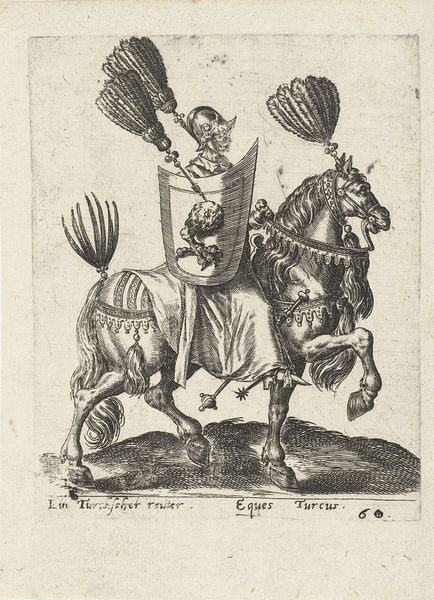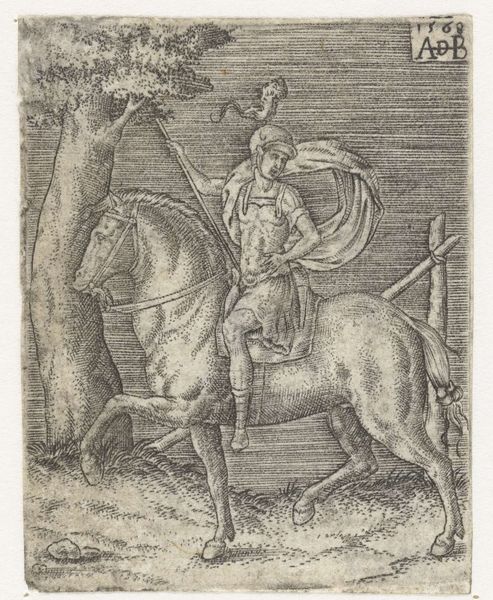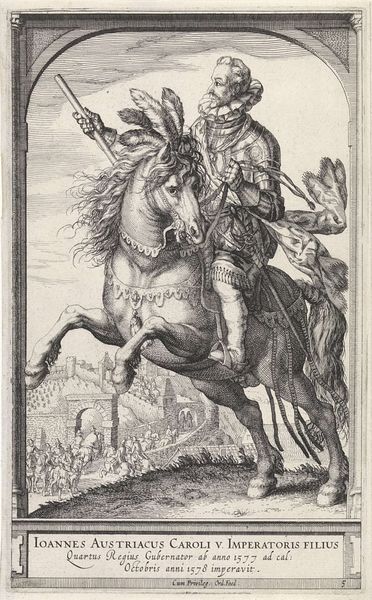
print, engraving
# print
#
landscape
#
figuration
#
11_renaissance
#
horse
#
history-painting
#
engraving
Dimensions: height 45 mm, width 74 mm
Copyright: Rijks Museum: Open Domain
Curator: Look at this intriguing engraving, "Alexander de Grote met zijn paard Bucephalus," or "Alexander the Great with his horse Bucephalus." It was crafted between 1510 and 1550 by Sebald Beham, here on display at the Rijksmuseum. Editor: Immediately, I’m struck by the dense, almost obsessive line work. It gives a sense of weight and muscularity, but also a kind of airlessness, doesn't it? Curator: Yes, the image carries a certain historical weight. Alexander and Bucephalus are, of course, powerful symbols. The horse itself is a signifier of royalty, dominance, even untamed nature brought under control. The detail around Alexander’s armor – note the skull, a memento mori – really anchors the image to broader Renaissance concepts. Editor: Right. And I find myself considering Beham’s choices here. The process of engraving – the cutting of lines into metal – feels so deliberate, so considered. It wasn't a casual choice, considering printmaking enabled a more democratic dispersal of imagery. Why Alexander? Why render him in this precise way? Curator: Think of the enduring power of Alexander’s image, particularly in this period. He was more than a conqueror; he embodied military prowess, wisdom, and kingship. And to make this available in a print allowed for a wider audience to learn about and from this cultural hero. Editor: I wonder about Beham’s social context as he made this. Who was the target audience? The scale here is so modest – did he consider them to be personal reflections for noble patrons, or was there something deeper here? The distribution networks would really dictate its social impact. Curator: Absolutely, this could have had broad appeal. The combination of the classic heroic theme, plus the readily available print medium meant even people outside royal circles could acquire a noble symbol, bringing them symbolically closer to that status. Editor: It's striking to observe the process of cultural memory at play, then, through Beham's engraving, the myth of Alexander persisting to serve new social and material realities. Curator: Indeed. It brings so many themes into focus: empire, virtue, mortality, all refracted through a unique vision and medium. Editor: Seeing those dense lines has prompted a deep-dive into the many economic layers and lingering impacts related to this historical portrayal.
Comments
No comments
Be the first to comment and join the conversation on the ultimate creative platform.
